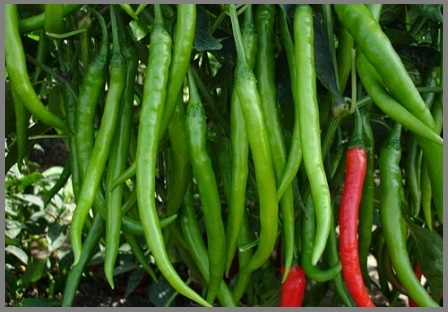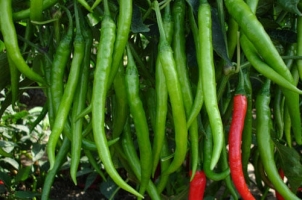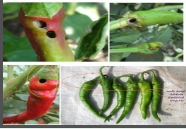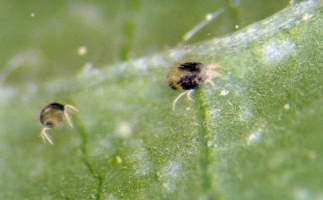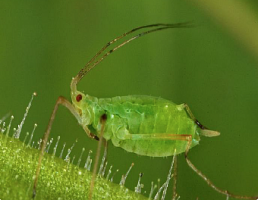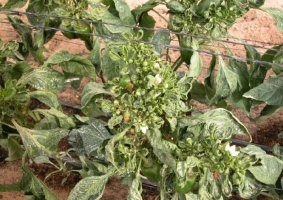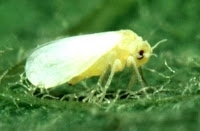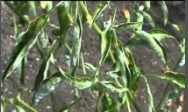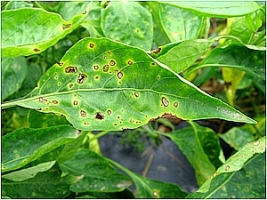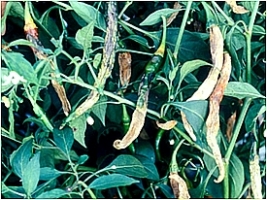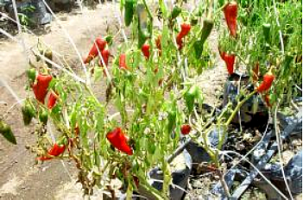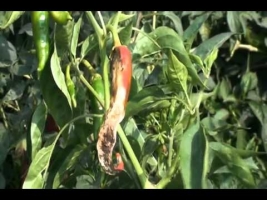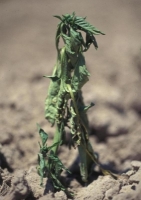Pusa Jwala: Plants are dwarf, bushy, light green. Fruits are 9-10 cm long, light green, highly pungent, fairly tolerant to thrips and mites. Average yield of 85 qtl/acre (green) and 18 qtl/acre (dry).
Pant C-1: This variety is easily distinguishable from the other varieties because of the fact that it has upright fruiting pods. The pods are highly pungent, relatively small in size, broader at the base and narrow towards the tip. It is moderately resistant to mosaic and leaf curl virus. The green pod yield of this variety is 110 qtl/acre. The dry pod yield is about 20 qtl/acre.
Pusa Sadabahar: Plants are erect, perennial (2-3 years), 60-80cm tall, fruits are 6-8cm long, born in clusters with 6-14 fruits/cluster, ripe fruits dark red, highly pungent, resistant to CMV, TMV and leaf curl complex, first picking in 75-80 days after transplanting. Average yield of 95 qtl/acre (green) and 20 qtl/acre (dry).
NP-46A: High yielding variety with medium size fruit. It gives average yield of 40 qtl/acre.
G 5 : Chilly is thick, glossy with deep red color. Gives average yield of 20 qtl/acre.
G 3 : Suitable for cultivation under rainfed and irrigated conditions. Chilly are having high pungency. Gives average yield of 16 qtl/acre.
Pant C 2, Jawahar, Mathaniya Long, RCH 1
Other state varieties:
Kashi Vishwanath
Sankeshwar: Mild flavor, long and red color variety. It is suitable for export.
Byadgi (Kaddi) : Mild flavor, long and bright red color variety.
Dabbi: Mild flavor, long and thick blackish variety.
Tomato chilly
Tadappally
S9 Mundu, Sattur s4, Sangli Sannam, Nalchetti, Nagpur, Madras Pari, Kashmir Chilly, Kanthari white, Guntur Sannam, Ellachipur Sannam.
Shimla Mirch or Capscicum Varieties
Yellow Wonder
Californiya Wonder
Arka Mohini

